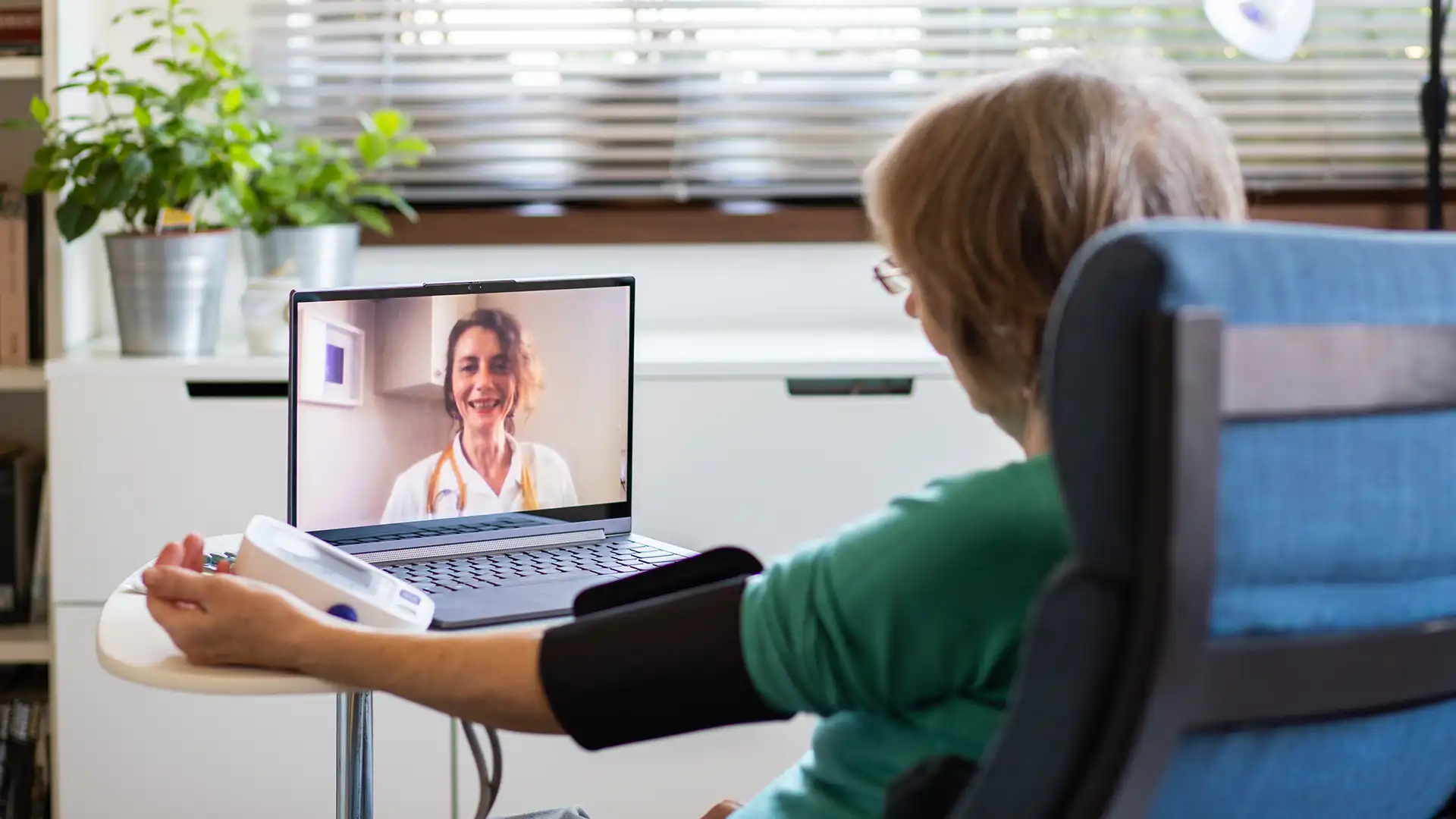Imagine waking up with a sore throat, a fever, or a nagging cough. Instead of waiting hours at an urgent care clinic, you grab your phone, log into a secure app, and within minutes, you are talking with a licensed provider. This is not just a modern convenience, it’s one of the most effective ways healthcare has adapted to meet patient needs. In fact, studies show that telehealth visits increased by over 38 times during the COVID-19 pandemic, and many patients have continued using it as a first choice for care.
So, what can telehealth treat? The short answer is: much more than you might expect. From common illnesses to long-term disease management, telehealth has grown into a trusted option for millions of Americans. In this complete guide, we’ll explore the conditions it can help manage, its benefits, its limitations, and what you should know before making telehealth part of your healthcare journey.
What Is Telehealth?
At its simplest, telehealth is healthcare delivered through technology. Instead of being face-to-face in a doctor’s office, you connect virtually by phone, video, or even secure messaging.
Telehealth can include:
- Virtual visits: Face-to-face video calls with doctors or nurse practitioners.
- Phone consultations: For quick check-ins or advice.
- Remote monitoring: Devices like blood pressure cuffs or glucose meters that send results directly to your provider.
- Health portals: Secure apps where you can message your doctor, get test results, or request prescription refills.
This model doesn’t replace all in-person visits, but it gives patients more options for receiving timely care.
Why Patients Turn to Telehealth
The benefits of telehealth are easy to see. Many Americans face long commutes to clinics, full waiting rooms, or limited access to specialists. Telehealth helps close those gaps by offering:
- Convenience: You can get care from your living room.
- Accessibility: Especially important for people in rural or underserved areas.
- Time efficiency: No travel or long wait times.
- Continuity of care: Regular check-ins are easier to schedule and attend.
- Safety: Less exposure to germs during cold and flu season.
It’s also flexible. Telehealth visits often take less time than in-person visits, which makes them easier to fit into workdays or school schedules.
Telehealth Care: Everyday Illnesses
One of the most common ways people use telehealth is through telehealth urgent care services. These visits cover non-life-threatening issues such as:
- Colds, flu, and sinus infections
- Strep throat or sore throat
- Ear infections
- Allergies and mild asthma flare-ups
- Stomach bugs, nausea, or diarrhea
- Skin rashes and minor infections
Providers can prescribe medications, suggest home remedies, or let you know if an in-person visit is necessary. For conditions like pink eye or seasonal allergies, virtual visits can be as effective as clinic visits.
Telehealth for Chronic Conditions
Beyond urgent needs, telehealth treatment has become essential for long-term health management. Chronic diseases often require close monitoring, medication adjustments, and regular communication between patients and providers.
Here are some examples:
- Diabetes: Patients can upload glucose readings to apps for provider review.
- High blood pressure: Home blood pressure monitors send results to doctors.
- Asthma or COPD: Doctors check in on inhaler use and adjust medications.
- Arthritis: Pain management and medication reviews can be done virtually.
For many patients, telehealth reduces the burden of traveling frequently to the clinic while still ensuring consistent care.
Telehealth Use for Mental Health
Mental health has been one of the biggest success stories for telehealth. With telehealth for mental health, patients can receive care privately, conveniently, and often more consistently.
Telehealth mental health services include:
- Therapy sessions with licensed counselors
- Medication management for depression, anxiety, ADHD, and other conditions
- Group therapy or support programs
- Follow-up care for patients already in treatment
Many patients report feeling more comfortable opening up in a familiar home setting compared to an office. This accessibility has significantly expanded the number of people who are able to receive support.
Telehealth for Weight Management
Managing weight is challenging for many Americans, and telehealth offers tools to make the process easier. Telehealth weight loss programs often combine lifestyle guidance with medical care.
Some of the best telehealth services for weight management include:
- Virtual nutrition counseling
- Personalized fitness recommendations
- Prescription medications, when appropriate
- Regular progress check-ins to keep patients accountable
Instead of occasional visits, patients have consistent support to stay on track.
Pediatric Telehealth: Care for Children
Parents are increasingly turning to telehealth for their kids. Pediatricians can evaluate symptoms virtually and decide if in-person care is needed. Common reasons for pediatric telehealth visits include:
- Rashes
- Ear pain or infections
- Allergies
- Cold and flu symptoms
- Behavioral or developmental concerns
Having a pediatric telehealth option can prevent unnecessary trips, which is especially helpful for families with multiple children.
What Can Telehealth Not Treat?
Even though telehealth is powerful, it has its limits. For emergencies, patients should always call 911 or go to the ER. Examples of conditions that require in-person evaluation include:
- Severe chest pain or trouble breathing
- Broken bones or large wounds
- Severe allergic reactions
- Conditions requiring imaging, like X-rays or CT scans
Telehealth works best as a complement to traditional care, not a complete replacement.
Telehealth for Specific Groups
Telehealth has emerged as a vital solution for enhancing healthcare access for various groups. By leveraging technology, it provides tailored services that cater to the unique needs of different populations. Below are some specific groups that particularly benefit from telehealth:
Seniors
Older adults often benefit from telehealth because it significantly reduces travel challenges associated with visiting healthcare providers in person. This innovative approach allows doctors to monitor chronic conditions effectively, adjust medications as needed, and provide valuable support to caregivers remotely, enhancing the overall quality of care.
Rural Communities
Telehealth serves as a vital link that bridges access gaps for patients living in rural areas, who may be hours away from specialists. Many rural hospitals are increasingly integrating telehealth solutions to connect their patients with a variety of specialists, including cardiologists, neurologists, and mental health providers, ensuring that they receive the necessary medical attention without the burden of long-distance travel.
Busy Families and Workers
For those with packed schedules and numerous commitments, telehealth offers a convenient and efficient solution. It provides quick, flexible care options that can easily fit around busy work and school routines, enabling families to prioritize their health without interrupting their daily lives.
How Doctors Use Telehealth
Healthcare providers are adopting telehealth to make care smoother for patients. Some of these include:
- Sending electronic prescriptions to pharmacies
- Using apps for lab results and secure messaging
- Scheduling routine follow-ups by video
- Offering hybrid models where patients combine in-person and online visits
This technology supports both patient care and healthcare efficiency.
Costs of Telehealth
Cost is often a major concern. The price of a telehealth visit varies, but many times it is less expensive than in-person care. Telehealth also reduces hidden costs such as transportation, parking, and time away from work. Over time, these savings can make managing your health more convenient and budget-friendly.
Take Your Next Step
The practical benefits are significant. Patients with heart disease can share readings daily, allowing doctors to detect problems early. Those struggling with anxiety can have therapy sessions more often, preventing relapse.
Parents can quickly get treatment for a child’s ear infection without disrupting the whole day. These examples show that what can telehealth treat goes far beyond simple cold and flu care.
Book your telehealth appointment today to experience the convenience and accessibility of modern healthcare. Whether you need a routine check-up or specialized treatment, our services are designed to fit your busy lifestyle and ensure you receive the care you need when you need it.
Takeaways
Telehealth has changed the way healthcare works in the U.S. It’s not just about convenience, it’s about accessibility, safety, and continuity. Understanding what telehealth treatment can do empowers patients to take full advantage of these services. From urgent needs to chronic disease management, telehealth continues to grow as a reliable option for everyday care.
Frequently Asked Questions (FAQs)
Can telehealth doctors prescribe medication?
Yes, indeed. Most telehealth providers are qualified to prescribe medications for a range of common medical conditions. However, it’s important to note that some controlled substances may still require an in-person visit to ensure patient safety and adherence to regulations.
What equipment do I need for telehealth?
Typically, you only need a smartphone, tablet, or computer with a reliable internet connection to participate in telehealth appointments. Some patients also choose to utilize monitoring devices, such as blood pressure cuffs or glucose meters, which can enhance the consultation by providing real-time health data.
Are telehealth visits affordable?
Telehealth visits are often more cost-effective than traditional in-person appointments. In addition to lower consultation fees in many cases, you save on extra expenses such as transportation, time off work, and childcare.
How private are telehealth visits?
Telehealth platforms are specifically designed with robust security measures to ensure the protection of patient privacy, striving to maintain confidentiality similar to that of traditional in-person visits. Providers are committed to safeguarding your personal health information during these virtual consultations.
____________________________________________________________________________
Medically Reviewed By: Ma. Lalaine Cheng




